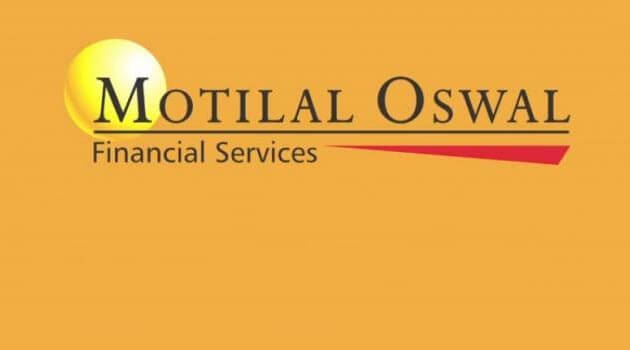This article is written by Bhumika Saishri Panigrahi, pursuing Diploma in M&A, Institutional Finance and Investment Laws (PE and VC transactions) from Lawsikho.
Table of Contents
Introduction
The ‘Scheme of Amalgamation’ provides for the merger of the transferor company and the transferee company in accordance with Sections 230 to 232 of the Company Act of 2013, as well as other applicable legislation.
Companies that want to merge must create a “Scheme of Amalgamation” (the “Scheme”). The Scheme is essentially a document that lays out all of the terms and circumstances of the proposed merger, which are finalised by the amalgamating businesses’ boards of directors.
The scheme, as the most important document in the amalgamation process, must be designed with great care and precision, taking into account all of the possible consequences under the numerous regulations that apply to the merging organisations.
About the company
Motilal Oswal Financial Services Ltd (MOFSL)’s Board of Directors has approved the Draft Scheme of Amalgamation for the merger of Motilal Oswal Securities Ltd (MOSL) with MOFSL, as well as the slump sale of its existing lending business to its wholly-owned subsidiary, which is in the process of being incorporated.
Motilal Oswal Financial Services Ltd (MOFSL) is a non-deposit taking systemically important non-banking financial business that is engaged in the lending and investing operations and is registered with the RBI under Section 45-IA of the RBI Act, 1934. It is a well-diversified financial services firm focused on wealth building for all types of customers, including institutional, corporate, high-net-worth individuals, and retail. Investment activities, loan against shares, wealth management, retail broking and distribution, institutional broking, asset management, investment banking, private equity, and commodity broking are among the company’s services and products. MOFSL’s current market capitalization is Rs 18,909 crore.
MOSL (Motilal Oswal Securities Ltd) was founded on July 5, 1994. It is a stockbroker and executes stock trades on behalf of its clients, which include retail customers (including high net worth individuals), mutual funds, foreign institutional investors, financial institutions, and corporate clients. It is a member of BSE Limited (BSE), National Stock Exchange of India Limited (NSE), and Metropolitan Stock Exchange (MSE). In addition to stock broking, it provides a wide range of financial products and services to its clients, including portfolio management schemes, mutual funds, private equity, and systematic investment programmes (SIPs). It is registered with SEBI as a Depository Participant, Research Analyst, and Investment Advisor, as well as with a number of other regulatory bodies such as AMFL, CERSAI, and KRA Agencies (CVL, Dotex, NDML, CAMS and Karvy). MOSL is a MOFSL WoS.
Business verticals of MOFSL
Capital market businesses
Distribution and broking
Equities (cash and derivatives), commodities broking and currencies, financial product distribution, depository services, and lending are all examples of financial services (though MOFSL)
Brokerage in institutions
Advisory equity broking (cash and derivatives)
Banking and finance
Capital raising, M&A advisory, domestic IPOs, private equity placements, corporate finance advisory, restructuring, FCCBs, and GDRs are just a few of the services they provide.
Business based on assets
- Private Equity Management and Advisory, Real Estate Management and Advisory,
- Exchange-Traded Funds (ETF).
Portfolio management, mutual funds, and offshore funds are all terms used to describe the services provided by portfolio management companies.
Business activity of MOSL
- Stockbroking (institutional and retail).
- The brokerage business activity of MOSL accounts for 77.28% of the total revenue of MOSL.
- The appointed date was April 1, 2017.
- There is no consideration involved because this is a WoS merger.
- According to a valuation report prepared by an independent chartered accountant and published as part of the board meeting’s outcome, MOFSL’s loan operation is valued at Rs 50 crore.
MOFSL would enter into a business transfer agreement with its WoS (to be established) for a Rs 50 crore lump sum cash consideration for the slump sale of its lending business. MOFSL will notify the stock markets once the business transfer agreement is signed, and while it will be signed concurrently, it will not be part of the demerger programme.
The reason for the drop in lending business sales is that it is in a downturn
According to the current regulatory framework, following the merger of MOSL and MOFSL, the stockbroker MOFSL cannot engage in any fund-related operations in its own name, but it can do so through its subsidiary.
In order to comply with regulatory requirements, MOFSL is transferring its lending activity to its newly formed WoS.
Tax implications
Section 47 of the Income Tax Act, 1961 exempts any capital asset transfer by a Holding Company to a 100 percent Indian Subsidiary Company from taxation (iv).
However, according to Section 47A of the Act, MOFSL is prohibited from transferring any shares in its newly incorporated WoS for a period of eight years after the slump sale.
The concern of “will the newly created WoS company have finances to pay the consideration to MOFSL” arises from the transaction of lending business being transferred to the newly incorporated WoS of MOFSL through a business transfer agreement.
Is this to imply that there will be a consideration in the form of shares against undertakings to be transferred under the slump sale? If this is the case, it will be treated as a slump exchange, and one can refer to CIT v R.R. Ramkrishna Pillai (66 ITR 725), in which the Supreme Court made a clear distinction between sale and exchange, holding that the transfer of assets in exchange for the allotment of shares in that company is an exchange and not a sale. Section 2(42C) of the Income Tax Act exempts Slump Exchange from taxation.
Accounting implications
The transferor company’s amalgamation shall be accounted for in the transferee company’s books of account in accordance with the “Pooling of Interests Method” of accounting as prescribed under Section 133 of the Act read with Rule 7 of the Companies Act (Accounts) Rules, 2014, as per Accounting Standard (AS) 14, “Accounting for Amalgamations.”
Despite the fact that MOFSL’s net worth has surpassed Rs 500 crores, Ind-AS will apply to MOFSL as of April 1, 2018 because it falls within the NBFC category.
MCA amended the Companies (Indian Accounting Standard) Amendment Rules, 2016, on March 30, 2016, to broaden the scope of Ind-applicability AS to certain companies. As a result, sub-rule (1) in rule (4) has been added to bring NBFCs within the fold of Ind-AS. As a result, Ind-AS will be applied to MOFSL beginning on or after April 1, 2018, with comparatives for the periods ending on March 31, 2018.
Why is this merger successful?
- MOFSL has consolidated its operational business holdings, resulting in increased operational flexibility and business synergy across its subsidiaries.
- Strong financial sheet with a combined net worth at the parent company level (MOFSL) to satisfy capital requirements in subsidiaries for future growth and expansion.
- Allows for the free flow of capital and the relaxation of investment/loan constraints by MOFSL in order to expand company activity.
Conclusion
As a result of this merger, there will be the following benefits that the company will enjoy:
- The MOFSL board will have more control over subsidiary business operations.
- It has also resulted in the consolidation of Motilal Oswal Towers’ immovable property into a single entity.
- The Net Block of Motilal Oswal Tower is worth Rs 72 crore as of March 31, 2017, and the aforementioned immovable property is mortgaged by MOSL to HDFC Bank Ltd.
- Fund-based investment activities are merged into one organisation.
- MOFSL shareholders have direct access to several of Flagship Broking’s major business activities and related business activities in the parent company.
- Finally, it will avoid multi-layering, a one-layer structure is consolidated.
References
- https://www.thehindubusinessline.com/companies/announcements/others/motilal-oswal-financial-services-ltd-announcement-under-regulation-30-lodr-awardoforderreceiptoforder/article24573946.ece
- https://www.moneyworks4me.com/company/news/index/id/272739
- https://www.motilaloswalgroup.com/Downloads/IR/886401084MOFSL-MOSL-Scheme-of-Amalgmation.pdf
Students of Lawsikho courses regularly produce writing assignments and work on practical exercises as a part of their coursework and develop themselves in real-life practical skills.
LawSikho has created a telegram group for exchanging legal knowledge, referrals, and various opportunities. You can click on this link and join:












